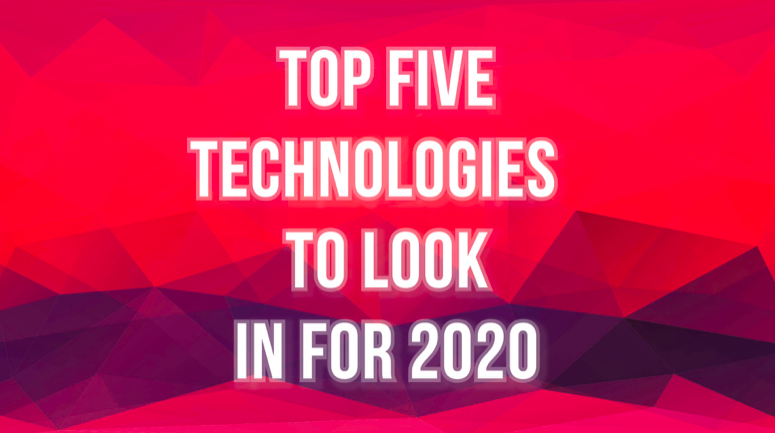Technology is now moving at such a rapid speed that predictions of trends can go out-of-date before they even go for day today use . As technology evolves, it enables even rapid change and progress, causing an acceleration of the rate of change, until eventually it will become exponential.
Technology-based job requirement don’t change at the same speed, but they do evolve, and the IT professional recognizes that his or her role will not stay the same ,And this requires for them to be constantly learning about the new trends.
What does this mean for you? It means staying current with technology trends. And it means keeping yourself updated on the future, to know which skillset you’ll need to know .
Here are some technology trends you should look for in 2020, and some of the jobs that will be created by these trends.
1. Artificial Intelligence (AI)
Artificial Intelligence, or AI, has already gained lot of impact in these years, but it continues to be a sensible trend to watch because its effects on how we live, work and play with AI based technologies are only in the early stages. In addition, other branches of AI have developed, including Machine Learning, which we will go into below. AI refers to computers systems built to human intelligence and perform tasks such as images ,speech and patten recognition and even decision making. AI can do these activities much faster and accurately than humans.
Everyone of us are using AI services in any form or another every day, including navigation apps, streaming services, smartphone personal assistants, ride-sharing apps, home personal assistants, and smart home devices. In addition to consumer use, AI is used to schedule trains, assess business risk, predict maintenance, and improve energy efficiency, among many other money-saving tasks. In 2020 AI will be used much in these areas below:
AI will make healthcare more accurate and less costly
Explainability and trust will receive greater attention
AI will become less data-hungry
Improved accuracy and efficiency of neural networks
AI in manufacturing
Predictive text should get better and better
The geopolitical implications of AI
AI in drug industry.
Quantum computing will supercharge AI
2. Machine Learning
Machine Learning is a subset of AI. With Machine Learning, computers are programmed to learn to do something they are not programmed to do: they learn by discovering data and insights from data. In general, we have two types of learning, supervised and unsupervised.
While Machine Learning is a subset of AI, we also have subsets within the domain of Machine Learning, including neural networks, natural language processing (NLP), and deep learning. Each of these subsets offers an opportunity for specializing in a career field that will only grow.
Machine Learning is rapidly being deployed in all kinds of industries, creating a huge demand for skilled professionals. The Machine Learning market is expected to grow more and more this year .It will also be used for data analytics and data mining . On the consumer end, Machine Learning powers web search results, real-time ads and network intrusion detection, to name only a few of the many tasks it can do.
3. Robotic Process Automation
Like AI and Machine Learning, Robotic Process Automation, is another technology that is automating jobs. RPA is the use of software to automate business processes such as interpreting applications, processing transactions, dealing with data, and even replying to emails. RPA automates repetitive tasks that people used to do,which are mostly the work of financial managers, doctors and CEOs
Though RPA automation will take away millions of jobs, RPA is creating new jobs while altering existing jobs.
For you as an IT professional looking to the future and trying to understand technology trends, RPA offers plenty of career opportunities, including developer, project manager, business analyst, solution architect and consultant.
4. Edge Computing
Formerly a technology trend to watch, cloud computing has become mainstream, with major players AWS (Amazon Web Services), Microsoft Azure and Google Cloud dominating the market. The adoption of cloud computing is still growing, as more and more businesses migrate to a cloud solution. But it’s no longer the emerging technology.
As the quantity of data we’re dealing with continues to increase, we’ve realized the shortcomings of cloud computing in some situations. Edge computing is designed to help solve some of those problems as a way to bypass the latency caused by cloud computing and getting data to a datacenter for processing. It can exist “on the edge,” if you will, closer to where computing needs to happen. For this reason, edge computing can be used to process time-sensitive data in remote locations with limited or no connectivity to a centralized location. In those situations, edge computing can act like mini datacenters. Edge computing will increase as use of the Internet of Things (IoT) devices .
5. Virtual Reality and Augmented Reality
Virtual Reality (VR) immerses the user in an environment while Augment Reality (AR) enhances their environment. Although VR has primarily been used for gaming thus far, it has also been used for training and a simulation software used to train.
Both VR and AR have enormous potential in training, entertainment, education, marketing, and even rehabilitation after an injury. Either could be used to train doctors to do surgery, offer museum goers a deeper experience, enhance theme parks, or even enhance marketing.
There are major players in the VR market, like Google, Samsung and Oculus, but plenty of startups are forming and they will be hiring, and the demand for professionals with VR and AR skills will only increase. Getting started in VR doesn’t require a lot of specialized knowledge. Basic programming skills and a forward-thinking mindset can land a job, although other employers will be looking for optics as a skill-set and hardware engineers as well.



